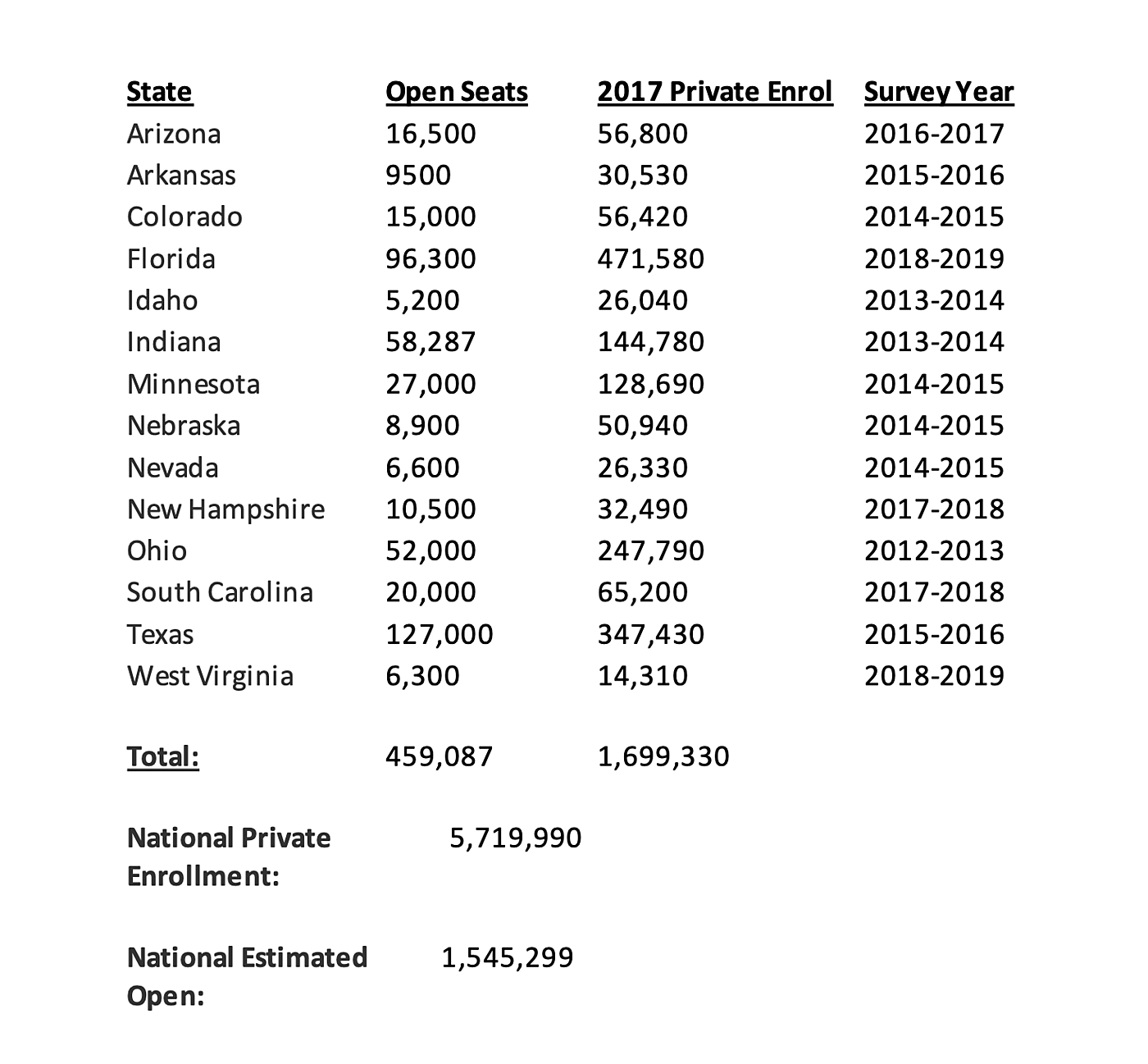Choice is the solution for a lot of our education problems, including cooling the culture wars being fought in our schools. But an objection we at CEF often hear is capacity. Even if choice were expanded, there is too little space in private schools to make a difference.
Is that a big problem? We hope to get more accurate data in the future, but a quick search for studies on open private school seats uncovered several showing that there likely are many spots currently available. Of course, if we expanded the ability to choose new schools would almost certainly open in the future, and many existing schools expand, so estimating currently open seats is just a starting point.
As you can see below, we found surveys of private schools – most from our friends at EdChoice – in fourteen states ranging from Idaho to Texas, and from the 2012–13 to 2018–19 school years. Although the surveys differed in location and year, the structure was essentially the same. Each asked state private schools how many open seats they had. Analysts then extrapolated respondents’ answers across the total number of private schools to get a rough estimate of how many open seats existed in the state.
Across the fourteen states, there were an estimated 459,000 open seats. Those states accounted for roughly one-third of the overall private school population in 2017. Extrapolating to all 50 states and D.C., there are around 1,500,000 seats open nationwide.
Of course, this is a very rough estimate that assumes a wide range of things have remained steady. That said, even a conservative estimate of 1,000,000 open seats would significantly exceed the number of students currently participating in choice programs. EdChoice’s 2022 ABCs of School Choice reported that around 620,000 students are using a choice program (voucher, tax-credit scholarship, or ESA) this school year.
Demand for choice has certainly been rising. COVID-19 has shown that children need flexibility, and families noticed that private schools were often faster to respond to changing conditions than public. Those who could enrolled accordingly, with one headline saying that COVID-19 “Boosted Private School Enrollment Forever,” and our private schooling survey last fall showed an uptick in enrollment as schools reopened.
We should see even more demand in the near future, as states have enacted choice expansions. Of course, that comes with the funding that is crucial for schools to expand capacity. EdChoice policy director and Cato adjunct scholar Jason Bedrick, along with EdChoice’s Ed Tarnowski, wrote that legislation passed in 2021 – the latest “Year of School Choice” – could immediately give approaching 2 million students more ability to access private schools. Perhaps not coincidentally, CEF’s Private Schooling Status Tracker has seen 35 private school openings announced since the start of the 2021–22 school year, compared to 10 closings. Choice expansion will also likely provide a catalyst for new innovations such as the ones Colleen Hroncich has been highlighting every week in her Friday Feature blog series.
Capacity should not be a concern for school choice; let’s continue to bolster educational freedom.

